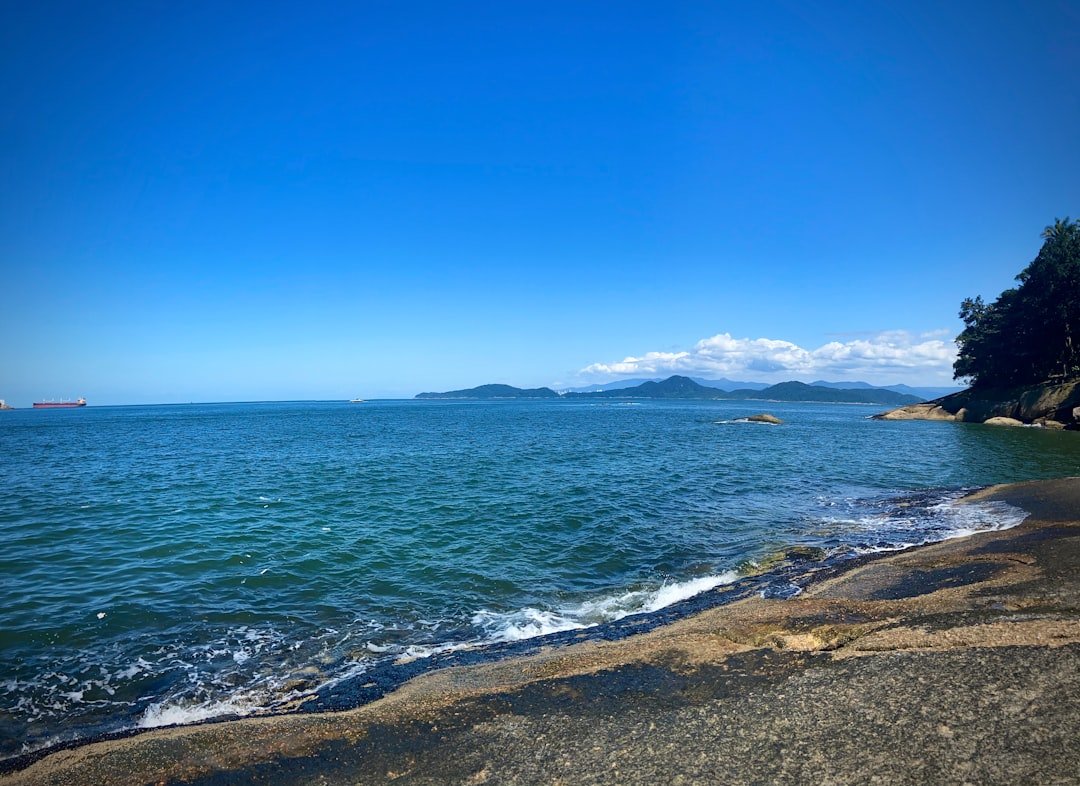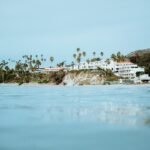A Complete Guide to Two Distinct Destinations: Examining the Differences Choosing a destination for your next trip can be very difficult. A distinct fusion of culture, history, and attractions can be found in every location. The geography, cultural identities, tourism offerings, lodging, dining scenes, activities, and modes of transportation of two different locations will all be covered in this article. By the end, you will know more about what each place has to offer, which will help you choose wisely for your next vacation. Check out the latest Nevada Events at Nevada Events.
Key Takeaways
- Location and Geography: Each destination offers unique landscapes and natural features, from the tropical beaches of one to the mountainous terrain of the other.
- Cultural and Historical Differences: The two locations have distinct cultural identities and historical backgrounds, with one being known for its ancient ruins and the other for its vibrant festivals.
- Tourism and Attractions: While one destination boasts bustling markets and ancient temples, the other offers serene natural reserves and wildlife sanctuaries.
- Accommodation and Infrastructure: Visitors can choose between luxury beach resorts and eco-friendly lodges, each offering a different experience in terms of amenities and sustainability.
- Dining and Nightlife: From street food stalls to upscale restaurants, and from lively beach bars to sophisticated cocktail lounges, the dining and nightlife scenes in these destinations cater to diverse tastes and preferences.
Geography is frequently the first thing that springs to mind when considering travel. Your experience can be greatly impacted by a destination’s location. Imagine exploring the untamed mountains of a highland retreat or standing on the sun-kissed beaches of a tropical paradise.
Every landscape provides context for your adventures & tells a tale. A coastal city renowned for its lively beach culture & a mountainous area renowned for its stunning scenery and outdoor pursuits are two examples of stark contrasts. The seaside city features sandy beaches, a busy boardwalk with stores and restaurants, and pleasant weather all year round.
In contrast, hikers and nature lovers are drawn to the mountainous area because of its gorgeous views, lush forests, and milder temperatures. Knowing these regional differences can help you choose the ideal location for your vacation. Beach Life and Maritime History Collide in Coastal City. There is a relaxed vibe in the coastal city where beach life is the main attraction.
| Aspect | Los Cabos | Cabo San Lucas |
|---|---|---|
| Location | Located at the southern tip of the Baja California Peninsula in Mexico | Located within the Los Cabos municipality at the southern tip of the Baja California Peninsula in Mexico |
| Attractions | Offers a variety of attractions including beaches, golf courses, and luxury resorts | Known for its vibrant nightlife, marina, and iconic rock formations like Land’s End |
| Size | Encompasses the entire municipality of Los Cabos, including Cabo San Lucas and San José del Cabo | One of the two main cities within the Los Cabos municipality |
| Activities | Popular for water sports, fishing, and whale watching | Offers a wide range of activities including shopping, dining, and boat tours |
Local seafood, music, and art festivals are frequent and attract both locals and visitors. This city’s development from a fishing village to a thriving urban center is demonstrated by the way its history is frequently entwined with maritime activities. There may be art galleries with pieces influenced by the ocean or museums devoted to its nautical history. A Treasure Trove of Indigenous Traditions and Roots in the Mountainous Region.
However, the mountainous area is steeped in rich customs that are a reflection of its historical significance and indigenous roots. Local crafts, folklore, and festivals honoring the changing seasons can all be found here. With buildings designed to survive severe winters, the architecture frequently conveys a tale of resiliency against the elements.
Talking with Locals: A Rich Experience. You can gain insights into the local way of life by interacting with them, which will make your visit more than just a vacation. Attractions that entice tourists are frequently what propel tourism. Every location has a unique selection of must-see attractions that appeal to various interests.
Famous sites like lighthouses, theme parks, and bustling marketplaces brimming with regional handicrafts may be found in the seaside city. The excitement for adventure seekers is increased by the appeal of water sports like sailing, snorkeling, and surfing. On the other hand, the area with mountains has a distinct charm. There are hiking trails in these national parks that lead to breathtaking waterfalls or vistas. Winter sports enthusiasts are drawn to ski resorts, and summertime visitors are encouraged to go rock climbing or mountain biking.
This area is a sanctuary for nature lovers because of its natural beauty, which is frequently enhanced by chances to see wildlife. Think about the attractions that appeal to you as you evaluate your options. Your tastes will direct you to the location that best suits your interests, whether you are drawn to the tranquility of mountain trails or the excitement of water sports.
Both locations provide a variety of lodging choices to accommodate different spending limits and tastes. Beachfront resorts with opulent amenities and breathtaking views of the ocean may be found in the coastal city. These places frequently have direct access to the beach, pools, and spas, making them the perfect place to unwind. On the other hand, the mountainous area might have comfortable lodges or cabins tucked away in the trees.
These lodgings frequently prioritize coziness and warmth, making them the ideal haven following a day of outdoor exploration. A lot of lodges also provide activities that let you experience nature firsthand, like guided tours. Your overall experience is also greatly influenced by the infrastructure.
Usually, the coastal city has excellent public transportation, which makes getting between attractions simple.
For discovering off-the-beaten-path hidden gems, renting a car may be necessary. Any trip would not be complete without food, and both locations provide distinctive culinary treats that are representative of their respective cultures.
Seafood is the most popular food in the coastal city. Enjoy fresh fish cooked in a variety of ways, such as grilled, fried, or stewed in flavorful sauces. Beachfront eateries frequently offer a relaxed dining experience where you can savor your meal while taking in the sound of the waves breaking nearby.
This coastal paradise has an equally exciting nightlife. Live music and dancing are available at the bars and clubs that line the boardwalk. Options that suit your mood are available, whether you’re searching for a lively dance club or a relaxed beach bar. Dining in the mountainous area, on the other hand, might emphasize filling dishes that keep you warm after a day of being outside. Imagine rustic taverns that serve food that is sourced locally, such as roasted meats, stews, and handmade breads.
The nightlife in this area is generally more restrained but still charming; warm pubs featuring live folk music provide a welcoming ambiance for relaxing after a day of exploring. Adventures in the Water. There are plenty of opportunities for water-based adventures in the coastal city. To see colorful coral reefs teeming with marine life, you could opt to go on a guided snorkeling tour or go sailing at sunset.
Land-Based Operations. If you prefer land-based activities, you can stay active while enjoying the sun by renting a bike or playing beach volleyball along beautiful paths. excursions in mountainous regions. Conversely, outdoor enthusiasts can enjoy a completely different range of activities in the mountainous area.
Hiking trails vary from short family-friendly strolls to strenuous ascents for experienced explorers. While teaching you about the local flora and fauna, guided tours can show you beautiful scenery. During the winter, the primary draw for thrill-seekers from nearby and distant places is skiing or snowboarding. Think about what most excites you as you choose your activities & excursions, such as swimming in the ocean or scaling mountain peaks, & use that information to inform your destination choice. A crucial component of any trip that has a big impact on how much fun you have is transportation.
Public transit systems are usually well-established & easy to use in coastal cities. Trams and buses can transport you between attractions with ease, letting you explore without having to worry about parking or finding your way around. Expect a different experience, though, if you decide to travel to the mountainous area. Public transportation options may exist in some places, but they might not be as extensive or frequent as those found in cities. For independent exploration of distant trails or undiscovered vantage points, renting a car might be your best option. Another thing to think about when selecting one of these locations is accessibility.
Because coastal cities have developed infrastructure, they frequently accommodate visitors with mobility challenges. In contrast, mountainous regions might be more difficult to reach because of their rough terrain & sparse infrastructure. You will discover that each of these two unique locations offers experiences catered to different interests.
One is distinguished by its majestic mountains and rich traditions, while the other is characterized by its coastal charm and lively beach culture. Your decision will ultimately be based on what appeals to you the most: Do you long for thrilling hikes through stunning scenery or sun-drenched days by the sea? Think about the activities that most interest you and how each location fits into your travel objectives. Now that you are aware of these differences in terms of location, culture, attractions, lodging, dining options, activities, transportation, & accessibility, you can choose wisely for your upcoming trip.
No matter where you go, you will surely have life-changing experiences that will leave you with enduring memories. Cheers to your journey!
If you are wondering if Los Cabos is the same as Cabo San Lucas, you may want to check out this article on cabo-adventures.net that delves into the differences between the two popular destinations in Mexico. The article provides insights into the unique characteristics of each area and helps travelers decide which one is the best fit for their vacation preferences.
FAQs
What is the difference between Los Cabos and Cabo San Lucas?
Los Cabos refers to the entire municipality in the southern tip of the Baja California Peninsula, which includes the towns of Cabo San Lucas and San José del Cabo. Cabo San Lucas is a specific town within the Los Cabos municipality.
Are Los Cabos and Cabo San Lucas the same destination?
No, they are not the same destination. Los Cabos encompasses a larger area that includes Cabo San Lucas, San José del Cabo, and the surrounding areas. Cabo San Lucas is a popular tourist destination within the Los Cabos municipality.
What are the main attractions in Los Cabos?
Some of the main attractions in Los Cabos include beautiful beaches, world-class golf courses, luxury resorts, water activities such as snorkeling and scuba diving, and the iconic natural rock formation known as El Arco.
Is it safe to visit Los Cabos and Cabo San Lucas?
Both Los Cabos and Cabo San Lucas are popular tourist destinations and generally considered safe for visitors. However, it’s always important to exercise caution and be aware of your surroundings while traveling.
What is the weather like in Los Cabos and Cabo San Lucas?
Los Cabos and Cabo San Lucas enjoy a desert climate with warm, sunny weather throughout the year. The summer months can be hot, while the winter months are milder and more comfortable for outdoor activities.



